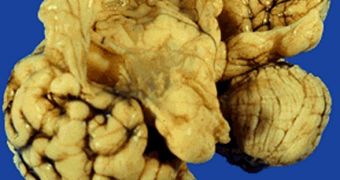We have an innate fear for snakes or spiders as have rats for cats.
So much that cat urine triggers fear response in rats that have never encountered a feline even by generations.
But after being infected with the brain parasite Toxoplasma gondii, however, rats turned attracted to cat urine, raising the chance to be preyed upon.
But a new research revealed the amazingly mechanism by which the parasite, which also infects over 50 % of the world's human population, operates with almost surgical precision, not affecting other behaviors.
"This discovery could shed light "on how fear is generated in the first place" and how people can potentially better manage phobias," said researcher Ajai Vyas, a Stanford University neuroscientist.
Toxoplasma's primary hosts are the felines, the only hosts in which it reproduces sexually, but this protozoan infects a large array of mammals, including humans, with about 50 million infected people in the US.
Some scientists say the parasite has affected human behavior enough to change entire cultures.
"The germ seems to especially like infesting the brain, parasites hijacking the mind," Vyas said.
In humans this disease is rarely deadly, but in pregnant women, if they get infected during pregnancy, can provoke abortion and the infection can be risky for infants and persons with depressed immune systems.
Some connect Toxoplasma to schizophrenia and even neuroticism.
The parasite could change the brains of rats to turn them into easier preys for cats, so they can jump into felines to start their sex life.
Vyas' team found that infected rats turn mildly attracted to bobcat urine, but they remained fearful of open spaces as uninfected rats and kept their fear response to sound cues predicting mild electrical shocks.
Rats are prudent enough when it comes to touch food that smells unfamiliar.
Infected rats, like the normal rats, rejected food smelling like coriander.
"One would thus assume that if something messes up with fear to cat pee, it will also mess up a variety of related behaviors. We do not see that. Toxoplasma affects fear to cat odors with almost surgical precision. We show that parasites are a little more likely to be found in amygdala [a region of the brain] than in other brain areas," Vyas said.
"This is important because the amygdala is involved in a variety of fear-related behaviors."
Other potential targets of the parasite could be the stress hormone corticosterone and the brain chemical dopamine.
Scientists will test if infected rats turn less afraid of cat images or scents of various rat predators.

 14 DAY TRIAL //
14 DAY TRIAL //